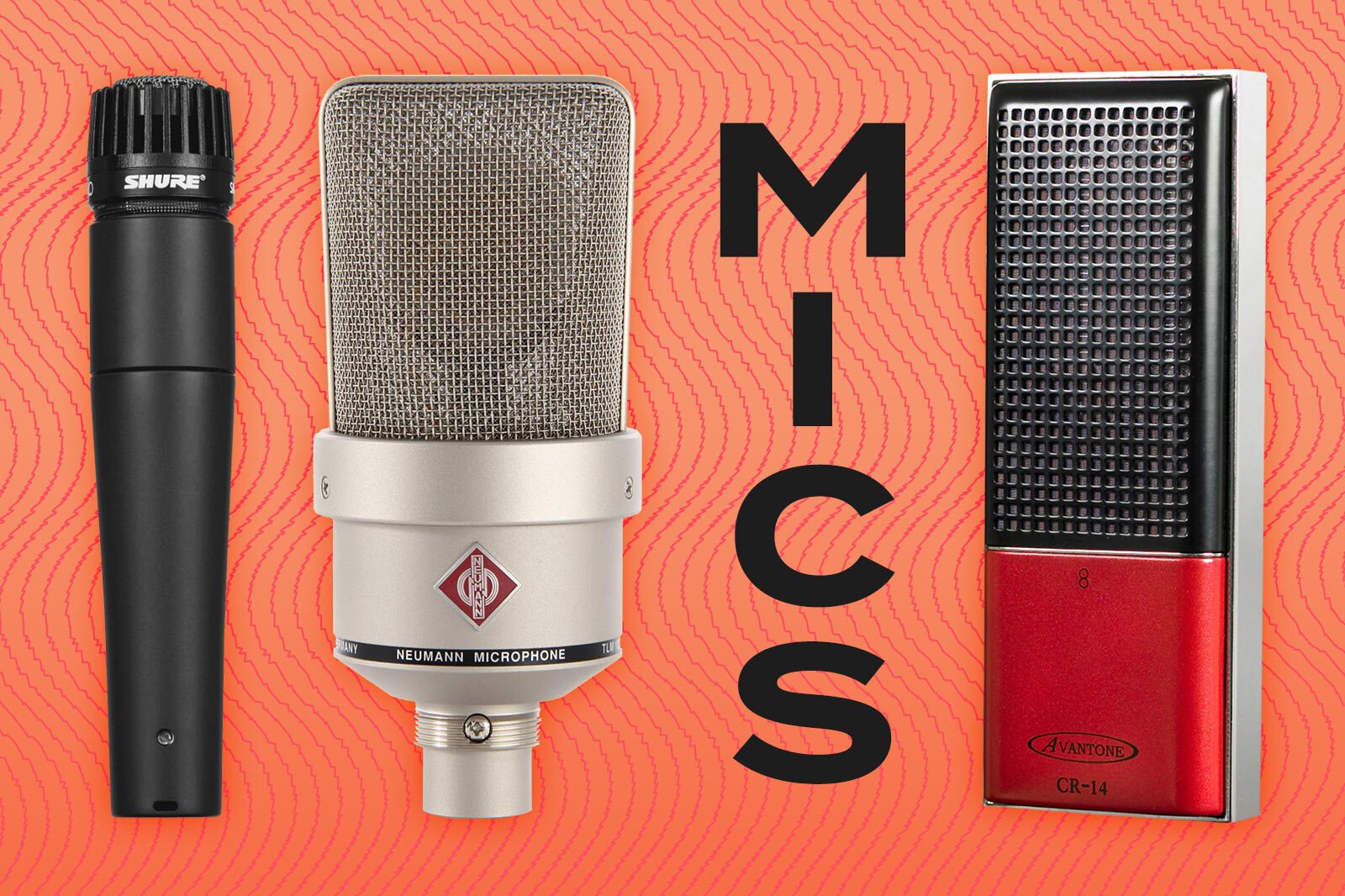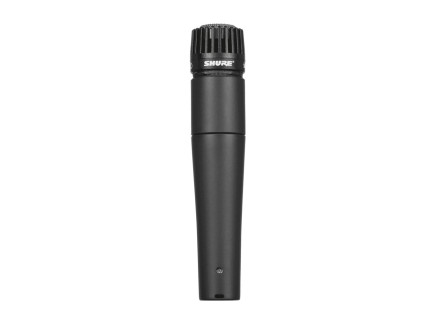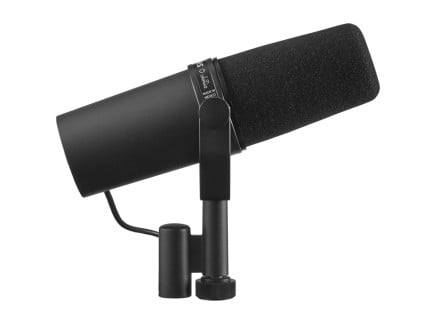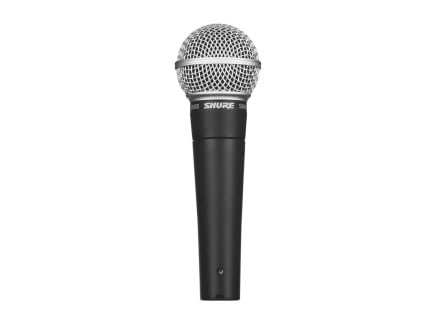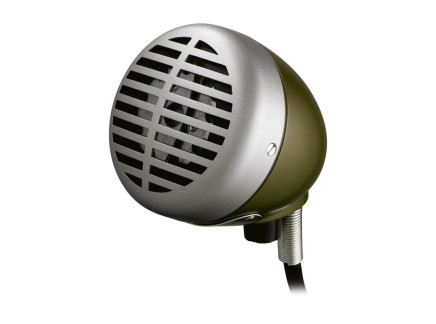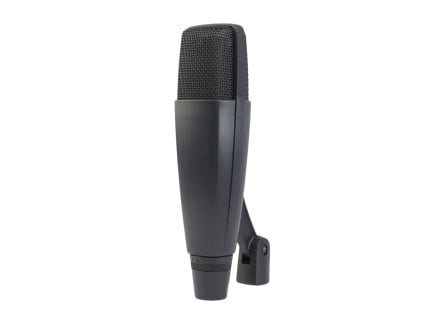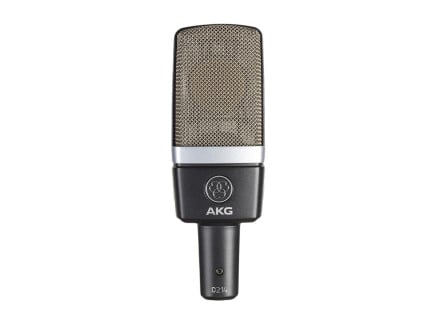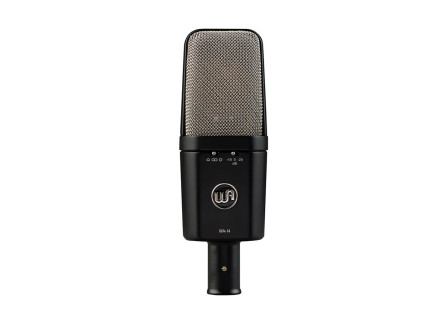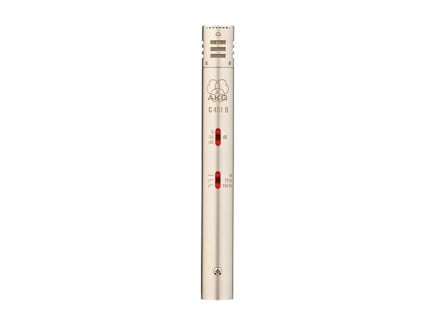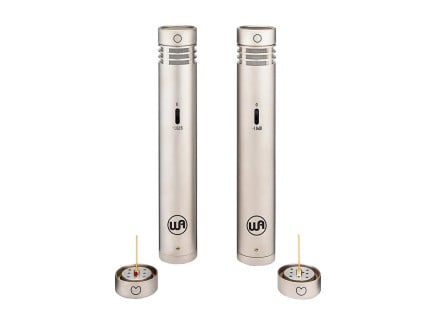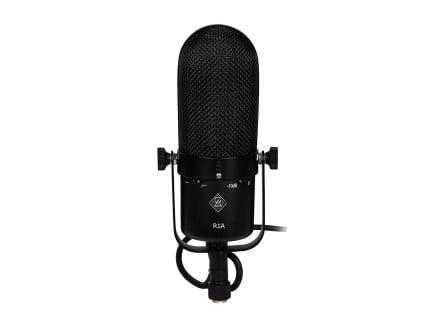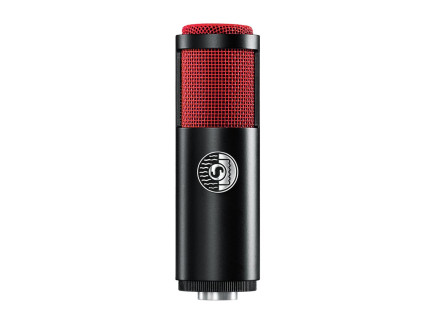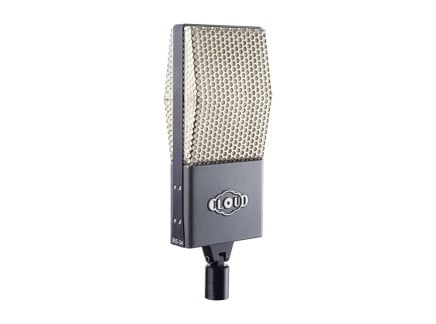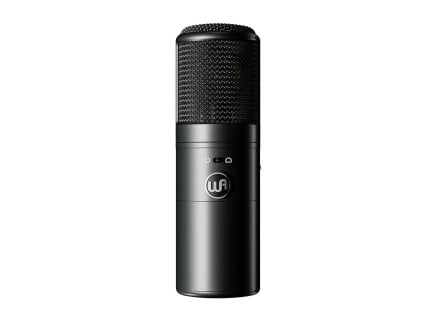Among the multitude of audio technology inventions, microphones remain an essential element of any recording studio, live performance, or broadcasting environment—in fact, it feels impossible to imagine the modern world without them. While microphones were once crude telecommunications devices, they've evolved over the last century into highly refined tools for capturing highly detailed sound...from vocals to field recordings, guitar cabs, and symphony orchestras.
Of course, the sheer variety of these highly specialized devices means that choosing a microphone for your personal recording setup can be a challenging task. Because different types of microphones tend to be better suited for different recording or live sound reinforcement situations, learning the meaning of various microphone specifications is critical to making an informed decision that will capture your sound clearly and keep the process of performing or recording as smooth and enjoyable as possible.
While there are quite a few things that need to be considered when choosing the right mic for the job, in this article we are mainly going to focus on one of the most fundamental concepts of microphone design—microphone operating principles. We discuss other specifications (like what microphone polar patterns mean) in other articles, but for now, let's focus on the basics: what is the difference between a dynamic microphone and a condenser microphone? Which is better for vocals, guitar, or synths? When should you consider using a ribbon microphone? Let's set out to find some answers.
What Makes Microphones Different from One Another?
So first things first—what are microphones, and how do they work? What kinds of microphone designs are out there?
A microphone is a transducer—a device that converts sound waves (fluctuations in air pressure) into an electrical signal, which can then be further amplified or recorded. Essentially, most microphone designs (except piezoelectric mics) are centered around a diaphragm—a thin plate made out of different materials hidden inside a microphone's capsule. The diaphragm is so thin and delicate that it can vibrate in sympathy with minute fluctuations in air pressure.
The biggest difference between the distinct types of microphones comes down to The nature of the material used for the diaphragm, as well as how precisely the sound waves are then converted into an electrical signal. Although the topic of microphone operation principles is large enough to dedicate a full article to each, we're going to give you a high-level overview of the three main mic categories that are by far the most prevalent in today's world: dynamic, condenser, and ribbon microphones.
What is a Dynamic Microphone?
Dynamic microphones (aka moving-coil microphone) are based on the principle of electromagnetic induction, where the microphone's diaphragm is attached to a small moveable coil of wire, and placed inside a magnetic field of a permanent magnet. When a sound hits the diaphragm, it forces it to vibrate inside the magnetic field, effectively causing an alternating current to flow in a circuit following a pattern similar to the incoming sound waves. This creates a clean, clear microphone response without being too sensitive, making it great for a wide variety of tasks.
Out of all microphone types, dynamic microphones are typically the most durable, and because they are not overly sensitive, they are perfect at handling extremely loud signals without distorting. As a side effect, they are also great at rejecting/ignoring unwanted ambient noise. As such, dynamic microphones are a typical choice for live performance, recording localized sound in noisy environments, and for recording particularly loud sound sources.
Two of the best-loved dynamic microphones are Shure's SM57 and SM58. At least one SM57 is likely to be found in any recording studio: it is commonly used as a close mic for drums, guitar amps, and other particularly loud sound sources—in fact, it's also common to see the SM57 on stage as a microphone for brass, winds, and guitar amps. The SM58, on the other hand is a staple live vocal microphone: it is exactly the microphone that you see the singers use at most shows. It offers excellent isolation from handling noise and from ambient sound, making it a perfect choice for live vocal performance.
Given their durability and affordability, the SM57 and SM58 are part of basically every studio and live venue's mic selection. But there are a couple of others that prove just how dreamy dynamic mics can be in the studio: Shure's SM7B and Sennheiser's MD421.
Like the SM57 and SM58, Shure's SM7 has a long history in the recording industry. First introduced in 1973, the SM7 was originally intended to improve on their previous SM5 broadcast microphone, using the then-new SM57's capsule as the basis for a completely new mic. Offering a more thoroughly optimized low-end response, the SM7 expands on the sonic palette of the 57 and 58. It offers a refined frequency response, providing wider and flatter performance all around: making it the ideal microphone for broadcast. And while it was certainly intended for radio and voiceover, its full potential became much clearer in 1982—when it was used to record most of Michael Jackson's vocals on Thriller. That alone should be a strong testament to its power: it's a clean, clear, no-nonsense mic that sounds amazing without significant need for further treatment. Despite the fact that we tend to think of large-diaphragm condenser mics (which we'll discuss shortly) as ideal vocal microphones, the SM7 (now available as SM7B) is proof that there aren't any rules about choosing the right mic for your project.
Introduced in 1960, the Sennheiser MD421 was intended to be used as a studio microphone from the get-go. While it is a common sight in ENG (electronic news gathering) and voiceover/radio/broadcast settings, it is a studio workhorse that is commonly used on everything from brass and winds to percussion, guitar cabs, and much more. Its built-in adjustable highpass filter (the "Music-Speech" switch) helps it to reduce the impact of plosives and handling noise with vocals, while its flat frequency response and graceful handling of high sound pressure levels make it a great choice for recording virtually any relatively loud sound source you might encounter. If you need a mic that you can throw at toms, kick drum, voice, brass, amps, and more, you'll quickly find that the MD421 can work its way into virtually any studio session or live performance.
So, dynamic microphones can handle a large number of tasks: and if your sole goal is to record your guitar cabinet, or to do live vocal performance, a dynamic mic of some variety is likely to serve you best. But while dynamic mics are great at capturing loud sound sources and isolated sounds in noisy environments, they don't always offer the level of sensitivity and clarity that is required for more delicate recording scenarios. That's where condenser microphones come in.
What is a Condenser Microphone?
In condenser microphones, the diaphragm is made out of a thin metal plate which sits in front of another plate known as the backplate. Together, they form what in the world of electronics is known as a capacitor (in fact "condenser" is an older term for capacitors)—a device that can store small amounts of electrical energy. Sound causes the diaphragm to move, and the change in distance between the two plates effectively changes the electrical signal that passes through the circuit, once again mimicking the pattern of the incoming sound waves.
Unlike dynamic microphones, condenser mics are active, meaning that they require external power to function (aka phantom power), which is most often supplied through the same cable that the audio signal passes through, but in other cases can also be provided by an internal battery, a power adapter, or a USB connection. Phantom power is usually provided to a microphone from an audio interface, a mixer, or a mic preamp at the press of a button (often labeled "Phantom", "+48V", or similar). By nature of this design, condensers are excellent at picking up quieter sounds and subtle nuances, as well as delivering a better representation of the high-frequency content than is possible with a dynamic microphone. Also, overall they tend to deliver a much more natural reproduction of the source. However, this also means that condenser mics are much more sensitive to louder sounds, and are prone to distorting if the incoming signal exceeds the maximum sound pressure level (SPL) the mic is designed to handle. So while dynamic mics are usually better for picking up loud sounds, condenser mics often offer considerably greater sensitivity and high-end clarity for sounds that need it.
Large-Diaphragm Condenser Mics
Let's distinguish between two sub-types of condenser mics: large-diaphragm, and small-diaphragm condenser mics. Naturally, the former ones have a physically large grill, and they tend to have lower self-noise. Large-diaphragm condensers like the legendary Neumann's U 87 and U 47 are often a preferred choice for miking vocals, acoustic guitar, and drums as they add richness and scale to the sound. This is especially true in the world of studio recording, where capturing sound with the utmost precision and detail is critical.
As with dynamic microphones, there is a nearly endless selection of large-diaphragm condenser microphones available. One modern favorite for home and studio recording is Neumann's TLM 103, a more affordable member of their line of distinct high-end microphones. With a capsule derived from the design of the legendary U 87, the TLM 103 provides crisp, cleare capture of virtually any sound you put through it.
It is a joy to use on vocals specifically: it features a largely flat frequency response with an intentional boost at ~5kHz, adding air and presence to any sound that passes through it. This provides a sense of tactility and clarity perfect for everything from intimate whispers to detailed, full-voiced bellows. Of course, this isn't uniquely useful for voice, either—that extra boost makes it stellar for crystal-clear acoustic guitar, strings, and winds as well. Offering a subset of the U 87 sound at a fraction of the price, the TLM 103 is our strongest recommendation if you're looking for the best match between microphone price, sound quality, and overall ease of operation.
We'd be remiss not to mention another studio favorite: AKG's C414. In some ways, this mic is quite different from the TLM 103—while the 103 is very much a what-you-see-is-what-you-get affair designed for fairly specific tasks, the C414 is a highly customizable tool that can be used in a broad range of circumstances.
Featuring built-in switches for various levels of bass roll-off, input level padding, and even selectable polar pattern, the 414 can be quickly tailored to suit virtually any sound source out there. It features a notably flat frequency response with little tonal coloration, cleanly translating any incoming sound for your recordings. While it doesn't have the immediate presence and "wow" of the 103, if you're looking for an all-around useful and highly detailed mic for voice, guitar, winds, we can't recommend the C414 enough.
Small-Diaphragm Condenser Mics
Small-diaphragm condenser mics such as the classic AKG C451 EB (now C451 B) are very compact, and they are great at picking up sounds exactly as they are, without any added coloration, as well as bringing out the subtleties. Because of these qualities, these kinds of microphones are often chosen as drum overheads, as well as for recording acoustic instruments, and entire orchestras.
As with large-diaphragm condensers, we look to Neumann for some of the best small-diaphragm condenser mics available. We're particular fans of the KM 184 microphones, especially when used as a pair: they make an excellent choice for stereo recordings as drum overheads, ensemble room mics, piano microphones, and much more. If you want detail and a sense of space, a couple of KM 184s is hard to beat.
The aforementioned AKG C451 B is another time-tested classic. Like the C414, it offers a high degree of built-in customization, with an integrated -10/-20dB pad and switchable highpass filter. This takes its already flat, clean performance and allows you to tailor it for use with unruly sources—providing clarity to virtually any sound source. In practice, it's very common to use a pair of C451 B as cymbal overheads, capturing the clang and high-end metallic textures with spectacular clarity; in fact, it's very common for basically any sound rich in high-end with detailed transients, such as acoustic guitar, piano, and more.
What is a Ribbon Microphone?
We've discussed the various strengths and weaknesses of dynamic and condenser microphones: typically, you'd use a dynamic mic with particularly loud sound sources, or sounds that require strong isolation from ambient sounds or other nearby instruments. Condenser mics, conversely, are better for capturing minute nuances, making them a great choice for lead vocals, strings, or any instrument that benefits from a high degree of nuance. Sometimes, though, replicating sound completely cleanly and clearly isn't precisely what you want: sometimes, you want the microphone to add some subtle color and warmth of its own. Oftentimes, that's where ribbon mics come in.
Ribbon microphones are similar in their operational principle to the dynamic microphones, as both rely on electromagnetic induction, however here instead of the induction coil, a thin piece of metal ribbon is suspended in the magnetic field. Ribbon microphones are often characterized as possessing a pleasantly warm and smooth response, and for this reason, they are well-loved by many recording engineers, and artists. For any instruments where you want to take off the natural acoustic edge, or for anything you want to provide some unnatural, vintage-style warmth, a ribbon mic can be an excellent choice.
Ribbon mics are, for instance, quite commonly used on brass instruments—both as a recording mic for soloists or for groups of instrumentalists acting as a section. With some care, they can provide a similar warmth for guitar cabs (just watch your volume!), and they are often used to add a nostalgic character to vocals or other solo instruments. A pair of ribbon mics can even be used in a novel stereo configuration for drums or ensemble recording—which we'll discuss at greater depth in another article.
Two of our favorite ribbon microphones for the money are the Golden Age Project R1A and Avantone's CR-14, each providing excellent, vintage-style ribbon mic tone at a great price. Worth note—the CR-14 in particular has a rated max SPL of 145dB, an uncommonly high SPL handling for a ribbon mic. This makes it a great choice for guitar cabs or other particularly loud sources, imparting depth and warmth to most high-volume sounds without needing to worry about damage. Perhaps more notably, the R1A even features a built-in pad...allowing it to gracefully handle up to 160dB SPL (!!!).
Microphone Operating Principles Encapsulated
So to recap—when should you use a dynamic mic versus a ribbon mic? When should you consider using a ribbon microphone? Well, typically, dynamic mics are best-suited for particularly loud sounds, or sounds that require isolation in noisy environments. That's why they're commonly used as live vocal microphones, guitar cabinet mics, and mics for the individual drums of a drum kit. Condenser mics are considerably more sensitive—so they're often less useful in noisy environments, but can help capture considerably greater nuance and detail when in a controlled environment. Ribbon mics intentionally sacrifice some of the nuance and realism of the other types in order to impart a pleasant warmth and silkiness, rounding out harsh edges and adding fullness to the original source sound...commonly useful for brass sections, edgy guitar cabs, and vintage-style vocals.
Hopefully these general guidelines will prove useful as you plot out which microphone to buy next (or first!). In a short article, we can only say so much about each specific type of microphone—but keep in mind that in actuality, the rules we've outlined aren't truly rules at all! In the real world, recording engineers typically have a broad selection of different types of microphones available. Moreover, they don't necessarily have a single "go-to" microphone for specific tasks—the best recording engineers instead listen to the sound at hand and choose from their arsenal of familiar tools whatever microphone or combination of microphones seems best for the job. Sometimes, that will mean using a condenser on a guitar cab, a dynamic mic on an acoustic guitar, or a ribbon mic on drums: as with any corner of musical creativity, it's about keeping your ears open and choosing what will help get you to the next step of the creative process as cleanly as possible.
That said, there's much more to come—in future articles, we'll discuss further concepts of microphone design, discussing polar patterns, specific miking techniques and more. Keep your eyes open, and until then, happy recording!

